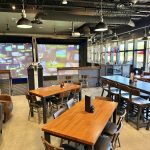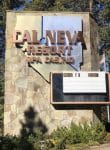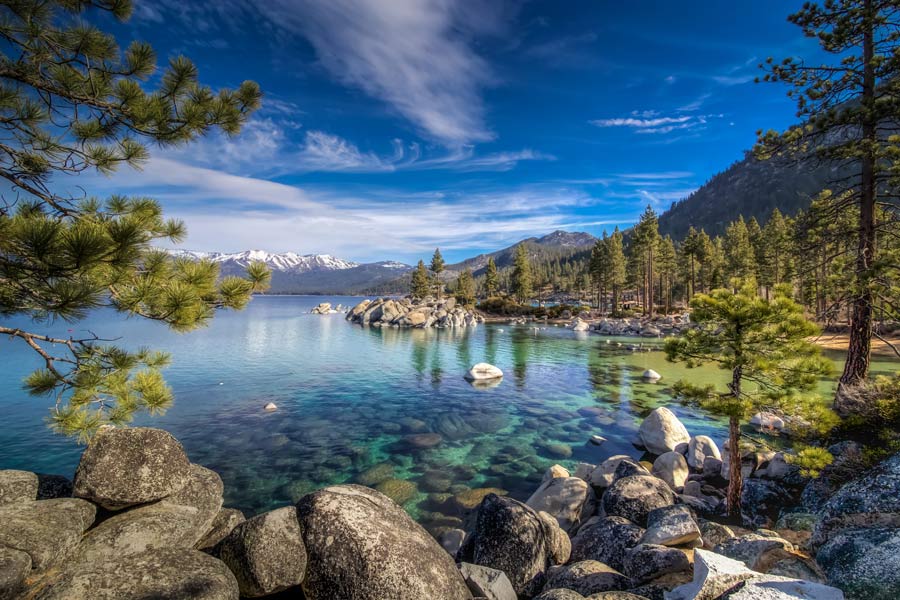Historic Cal Neva Resort to use prefab construction on villas

Provided/Don Graham
CRYSTAL BAY, Nev. – By November, Cal Neva Lodge owners will have made a decision on which modular building company it will use for a little more than half of the Cal Neva Villas at the historic Lake Tahoe resort.
“We’re still in the process of finishing the design, so a final decision hasn’t been made on exactly which units will be modular and which will be in place,” said McWhinney Senior Vice President of Hospitality Development Jason Newcomer, who works for the developer and owner. “But approximately half we’re looking at modular and half in place … but that will be the only modular construction. It will just be for those villas. So the other construction for the rest of the project will be traditional on-site construction.”
Modular buildings are prefabricated buildings that consist of repeated sections called modules. The modules generally have universal parts that are manufactured in a factory and are constructed off-site. Then the modules are brought to the building location for assembly.
Modules construction is quicker to build than traditional on-site construction.
The square footage is 40,765 total for the villas, according to the permit.
“Right now 30 of the 52 hotel keys (villas) will incorporate modular construction,” Newcomer said. “There still will be some on-site construction associated with them like building the decks and entry.”
The rest of the villas will be in-place construction.
The villas will be a combination of stand alone units, two-story units, and multiple units under the same roof.
Newcomer explained it could shift a little depending on the final decision on the design and which villas are modular versus in place.
“We (McWhinney) have not used prefabrication before, so this will be the first time for us to utilize this technique,” Newcomer said. “And usually, because we’ve developed more in urban areas in our prior projects, it just made more sense to do in place. But in more resort or kind of remote areas, that’s where modular construction process can help and benefit.”
McWhinney decided to use part modular construction because of timing and site logistics.
“In some conditions, it’s easier to do modular versus in-place,” said Newcomer. “So think of like trying to build something on a steep hill. It is in some cases easier for modular. In some cases it’s easier in place.”
From a schedule perspective, he said, to make sure the 52 units can be built in time for the opening in 2026 that coincides with the resort’s 100th anniversary.
The resort was built in 1926 and was later redeveloped by Frank Sinatra. During its glitzy heyday, Cal Neva Resort hosted hundreds of celebrities including John F. Kennedy and Marilyn Monroe. The property eventually fell into disrepair and permanently closed in 2013.
In addition to the villas, the revitalization plan calls for 164 hotel rooms in the hotel tower, a wellness center, full spa, indoor pickleball courts, and a theater on the 13-acre property. The historic lodge will be preserved and refreshed. There will be multiple restaurants and an intimate casino with a lounge and gaming.
With a big project, Newcomer said there can be limitations in the labor force and subcontractors, especially in Tahoe.
That’s “a decent amount of units getting built,” Newcomer said. “And so it was to kind of help on the schedule and just give us greater confidence that it can all … be built within our overall timeline.”
The villas contract price is $27,550,000, according to a document filed with the Washoe County Community Services Department Planning and Building Division.
Newcomer said the team is still designing so “we don’t have a total project cost yet.”
“When someone comes into these rooms, you’re not going to be able to tell the difference between what was modular or prefab or built in place,” Newcomer said. “… they will look exactly the same. The tile, the paint on the wall, the light fixtures, all the cabinetry, all of that will all look the same because it’s … the same level of finish.”
He said how it was built is really the only distinction, whether it was built in place or built in a factory.
“So, there really is no distinction in the quality, modular construction has really come a long way,” Newcomer said. “At the end of the day, you can’t tell the difference. If you were there while it was getting set, you could see it. But when you walk through the finished product, be modular or in place, it looks the same. It’s a really high quality.”
Newcomer said there won’t be a differentiation in price.
“They’ll all be, you know, around the same price point,” Newcomer said. “So there won’t be any differentiation between the modular or the in place construction … So the layout and the functionality and the finishes will all be similar between the two different types of construction.”
SMC Construction in Sparks is the contractor for the entire project that straddles the Nevada-California border. SMC Construction will also be working with the modular manufacturer for the modular component of the villas.
“This is a fairly large commercial project and they (SMC Construction) have experience at the lake and have done some stuff around the lake and have done some projects in Park City, Utah, a high end hotel and condo project,” Newcomer said. “… and so we thought it was a good mix that they can handle larger commercial projects, but also have relationships and connections with subcontractors that are local.”
Newcomer explained the states usually handle the inspection and approval process for modular construction and the counties handle in-place construction.
Earlier this month, Seth Bartlett of Collaborative Design Studio architecture firm in Reno filed a permit with Washoe County for the site-built units at 2 Stateline Road in Crystal Bay, according to Accela Citizen Access. Because the villas contain prefabrication, an additional permit was filed with the state of Nevada.
To learn more about the project, visit http://www.revitalizecalneva.com.

Support Local Journalism

Support Local Journalism
Readers around the Lake Tahoe Basin and beyond make the Tahoe Tribune's work possible. Your financial contribution supports our efforts to deliver quality, locally relevant journalism.
Now more than ever, your support is critical to help us keep our community informed about the evolving coronavirus pandemic and the impact it is having locally. Every contribution, however large or small, will make a difference.
Your donation will help us continue to cover COVID-19 and our other vital local news.









